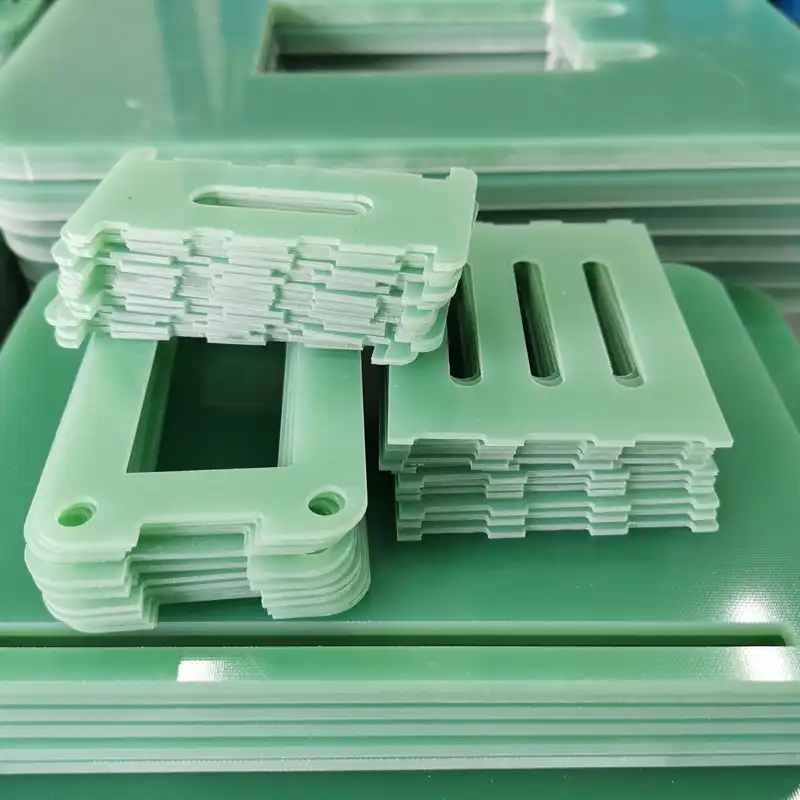Understanding European Regulations for G10 Epoxy Sheets
RoHS Compliance for G10 Epoxy Sheets
The Restriction of Hazardous Substances (RoHS) directive is a crucial regulation that G10 epoxy sheet importers must consider. This directive restricts the use of certain hazardous materials in electrical and electronic equipment. G10 epoxy sheets, often used in electronic applications, must comply with RoHS standards to be legally sold in the European market.
To ensure RoHS compliance, importers should:
- Obtain detailed material composition information from suppliers
- Conduct regular testing to verify the absence of restricted substances
- Maintain up-to-date compliance documentation
RoHS compliance demonstrates a commitment to environmental responsibility and product safety, enhancing the appeal of G10 epoxy sheets to environmentally conscious European consumers.
REACH Regulations and G10 Epoxy Sheets
The Registration, Evaluation, Authorization, and Restriction of Chemicals (REACH) regulation is another pivotal consideration for G10 epoxy sheet importers. REACH aims to protect human health and the environment from the risks posed by chemicals. As G10 epoxy sheets contain various chemical substances, compliance with REACH is paramount.
Key aspects of REACH compliance include:
- Registering substances used in the production of G10 epoxy sheets
- Communicating information on substances of very high concern (SVHCs)
- Adhering to any restrictions on the use of specific chemicals
Importers should work closely with their suppliers to ensure all substances in G10 epoxy sheets are properly registered and that no restricted substances are present above permissible levels.
CE Marking Requirements
While not all G10 epoxy sheets require CE marking, those intended for certain applications may need to bear this symbol of conformity. CE marking indicates that a product meets the essential requirements of relevant European directives and can be freely marketed within the European Economic Area (EEA).
To determine if CE marking is necessary:
- Identify the intended use of the G10 epoxy sheets
- Review applicable European directives
- Conduct conformity assessments if required
If CE marking is needed, importers must ensure their G10 epoxy sheets undergo the necessary conformity assessment procedures and carry the appropriate documentation.
Certification Process for G10 Epoxy Sheets
Selecting Accredited Testing Laboratories
Choosing the right testing laboratory is crucial for obtaining accurate and recognized certifications for G10 epoxy sheets. Accredited laboratories ensure that testing procedures adhere to international standards and that results are widely accepted across the European Union.
When selecting a testing laboratory, consider:
- Accreditation status and scope
- Experience with G10 epoxy sheets and similar materials
- Turnaround times and cost-effectiveness
Reputable laboratories will provide comprehensive test reports that can be used to demonstrate compliance to European authorities and customers.
Required Tests and Analyses
G10 epoxy sheets must undergo various tests to verify their properties and compliance with European standards. These tests assess the material's electrical, mechanical, and thermal characteristics, as well as its chemical composition.
Common tests for G10 epoxy sheets include:
- Dielectric strength and breakdown voltage tests
- Flexural and tensile strength measurements
- Flammability and arc resistance evaluations
- Chemical analysis for RoHS and REACH compliance
Importers should work with their suppliers and testing laboratories to develop a comprehensive testing protocol that addresses all relevant European standards and regulations.
Documentation and Record-Keeping
Proper documentation is essential for demonstrating compliance and facilitating smooth importation of G10 epoxy sheets into Europe. Maintaining detailed records of certifications, test results, and compliance declarations is crucial for regulatory compliance and customer assurance.
Key documents to maintain include:
- Material safety data sheets (MSDS)
- Test reports from accredited laboratories
- Declarations of conformity
- Traceability records
Organizing these documents in a readily accessible manner will streamline customs procedures and expedite the import process for G10 epoxy sheets.
Best Practices for Importing G10 Epoxy Sheets to Europe
Supplier Evaluation and Auditing
Selecting reliable suppliers is paramount when importing G10 epoxy sheets to Europe. A thorough supplier evaluation process helps ensure consistent quality and compliance with European regulations.
Key aspects of supplier evaluation include:
- Assessing manufacturing capabilities and quality control processes
- Reviewing certifications and compliance history
- Conducting on-site audits when feasible
Regular supplier audits help maintain high standards and foster long-term partnerships that benefit both importers and manufacturers of G10 epoxy sheets.
Customs Clearance Strategies
Navigating customs procedures efficiently is crucial for timely and cost-effective importation of G10 epoxy sheets. Understanding and preparing for customs requirements can prevent delays and additional expenses.
Effective customs clearance strategies include:
- Accurate classification of G10 epoxy sheets under the correct Harmonized System (HS) code
- Preparation of all necessary documentation in advance
- Engagement with customs brokers familiar with European regulations
Proactive communication with customs authorities and staying informed about any changes in import regulations can further smooth the importation process.
Continuous Compliance Monitoring
Maintaining compliance is an ongoing process that requires vigilance and adaptability. European regulations evolve, and importers must stay abreast of these changes to ensure continued compliance of their G10 epoxy sheets.
Strategies for continuous compliance monitoring include:
- Subscribing to regulatory update services
- Implementing periodic compliance audits
- Fostering open communication channels with suppliers and regulatory bodies
By adopting a proactive approach to compliance, importers can mitigate risks and maintain a competitive edge in the European G10 epoxy sheet market.
Conclusion
Importing G10 epoxy sheets to Europe presents both opportunities and challenges. By understanding and adhering to certification and compliance requirements, importers can successfully navigate the complex regulatory landscape. Thorough supplier evaluation, meticulous documentation, and continuous monitoring of compliance standards are key to long-term success. As the European market for high-performance insulation materials continues to grow, importers who master these compliance tips will be well-positioned to capitalize on emerging opportunities and establish themselves as trusted suppliers of G10 epoxy sheets in Europe.
Contact Us
For more information about our G10 epoxy sheets and our expertise in navigating European import regulations, please contact us at info@jhd-material.com. Our team is ready to assist you in ensuring smooth and compliant importation of high-quality G10 epoxy sheets to meet your European market needs.






